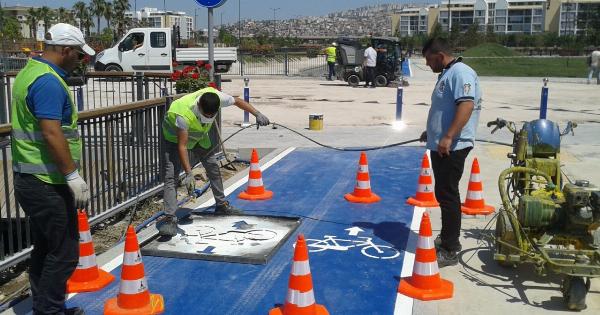As an expectant mother, experiencing the onset of labor can be both exciting and overwhelming. The anticipation of meeting your baby is mixed with the uncertainty of what lies ahead.
Understanding the stages and signs of labor can help alleviate some of the anxiety and ensure a smoother birthing experience. In this comprehensive guide, Menelao Lygnos, OB-GYN, will walk you through the different phases of labor and provide valuable insights to prepare you for this remarkable journey.
Stage 1: Early Labor
Early labor, also known as the latent phase, is the initial stage of labor where your body prepares for childbirth. It typically lasts the longest, varying from hours to days.
During this stage, you may experience irregular contractions that gradually become more frequent and intense. These contractions help thin and dilate the cervix, allowing the baby to move through the birth canal.
You may also notice a bloody show or the release of the mucus plug, which is a positive sign that your body is getting ready for delivery.
It’s important to conserve your energy during this phase by resting, staying hydrated, and eating light, nutritious meals. You can distract yourself with activities such as walking, taking warm baths, or practicing relaxation techniques.
Stage 2: Active Labor
Active labor is when your cervix begins to dilate more rapidly, usually around 4-7 centimeters. Contractions intensify and become regular, occurring every three to five minutes.
During this stage, it’s time to head to the hospital or birthing center. The contractions may require you to focus your attention and use coping strategies, such as breathing exercises or relaxation techniques.
Your medical team will monitor your progress and provide support as needed.
As the intensity of contractions increases, you may find relief in various pain management options, including epidurals, nitrous oxide, or alternative methods like hypnobirthing.
It’s essential to communicate your preferences to your healthcare provider beforehand to ensure a personalized birthing experience.
Stage 3: Transition
The transition phase is the shortest but most intense stage of labor. By this point, your cervix is fully dilated, and the baby is preparing to enter the birth canal.
You may experience frequent and strong contractions, accompanied by pressure in the pelvic region and the urge to push. Mentally and emotionally, this phase can be overwhelming, as you may feel a mix of excitement, fear, and exhaustion.
Your medical team will guide you through the pushing process, providing direction and encouragement. Focus on your breathing and use relaxation techniques to manage the discomfort.
Remember that the intensity of this stage is a positive sign that you are closer to meeting your baby.
Stage 4: Delivery of the Placenta
After your baby is born, the uterus continues to contract, causing the placenta to detach and be expelled from your body. This stage typically occurs a few minutes after delivery and is generally quick and painless.
Your healthcare provider will gently guide you through this process, ensuring that the placenta is expelled in its entirety.
It’s crucial to communicate any concerns or abnormalities during this stage to your medical team, as the complete delivery of the placenta is critical for your postpartum well-being.
Coping Strategies for All Stages of Labor
Throughout the different stages of labor, it’s essential to have coping strategies in place to manage the physical and emotional challenges. Here are some techniques that can help:.
1. Breathing Exercises: Deep and focused breathing can help you relax and manage the pain during contractions.
2. Relaxation Techniques: Practicing techniques such as meditation, visualization, or listening to calming music can help create a soothing environment.
3. Hydrotherapy: Soaking in a warm bath or using a birthing pool can help relieve muscle tension and promote relaxation.
4. Massage and Counterpressure: Gentle massage or applying pressure on specific areas can help alleviate discomfort and provide a sense of relief.
5. Position Changes: Experimenting with different positions, such as walking, using a birthing ball, or leaning on a partner can help manage pain and encourage progress.
6. Emotional Support: Surrounding yourself with a supportive birth team, including your partner, family members, or a doula, can provide the emotional support and encouragement you need throughout labor.
What to Pack for the Hospital
As you approach your due date, it’s essential to have a hospital bag packed and ready. Here are some essentials to consider:.
1. Comfortable Clothing: Pack loose, comfortable clothes to wear during labor and postpartum. Don’t forget socks and slippers.
2. Toiletries: Bring personal hygiene items, such as toothbrush, toothpaste, shampoo, and any other essentials that make you feel refreshed.
3. Snacks and Drinks: Labor can be long and often leaves you feeling hungry or thirsty. Pack nutritious snacks and hydrating drinks to keep your energy levels up.
4. Entertainment: Bring items that can distract you during the early stages of labor, such as books, magazines, or a tablet.
5. Nursing Essentials: If you plan to breastfeed, include nursing bras, breast pads, and nipple cream. A breastfeeding pillow can also be helpful.
6. Baby Essentials: Don’t forget to pack a going-home outfit for the baby, diapers, wipes, and a receiving blanket.
Postpartum Care
After the arrival of your baby, it’s vital to prioritize your postpartum care. Your body needs time to heal and adjust to the physical and emotional changes.
Rely on your support system, and don’t hesitate to ask for help with household chores, cooking, or caring for your newborn. Rest as much as possible, staying hydrated and eating nutritious meals to support your recovery.
Attend follow-up appointments with your healthcare provider to ensure any postpartum issues are addressed promptly.
Remember that every labor experience is unique, and it’s essential to remain flexible and open to adjustments along the way.
By gaining knowledge and preparing yourself physically and emotionally, you can approach the onset of labor with confidence and find strength in the miracle of childbirth.




























